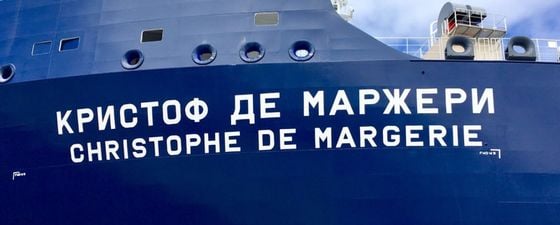LNG tanker manages to navigate between two remote Russian ports in a record-breaking six-and-half days
In 2012 we brought you the story of the 3D seismic vessel Polarcus Alima that had successfully transited from Norway to the Asia-Pacific region via the Northern Sea Route – a first in the seismic industry, and an achievement which saved considerable time, fuel, emissions and costs (Transiting the Northern Sea Route). That mission, proved that days could be shaved off transit times using the route and was accomplished with the aid of Polarcus’ specially adapted fleet and a series of nuclear powered icebreakers.
The Northern Sea Route. (Source: TOTAL)
Now we are hearing reports of the Christophe de Margerie – the first of 15 ice-class LNG carriers to be operated by Sovcomflot on behalf of Total, Novatek, CNPC and the Silk Road Fund – using the same Northern Sea Route to deliver its cargo of natural gas. The vessel will transport gas from the Yamal LNG project which, according to TOTAL, is the largest industrial project in Russia’s Far North and includes 200 wells, an airport and three LNG trains with a capacity of 5.5 million metric tons each.
The 300m-long carrier has a capacity of 172,600 m3 of LNG and its strong, ultra-lightweight steel reinforced hull makes it the largest commercial ship to receive Arc7 certification and allows it to sail through ice up to 2.1m thick.
In the winter, the Christophe de Margerie will take a western shipping route. In the summer, it will travel to Asia by a new north-eastern route.
The tanker managed to complete the northernmost part of the voyage between two remote Russian ports in a record-breaking six-and-half days.
A number of sources are suggesting that climate change and global warming are resulting in the increased opening of these once ice-bound Arctic sea routes.




